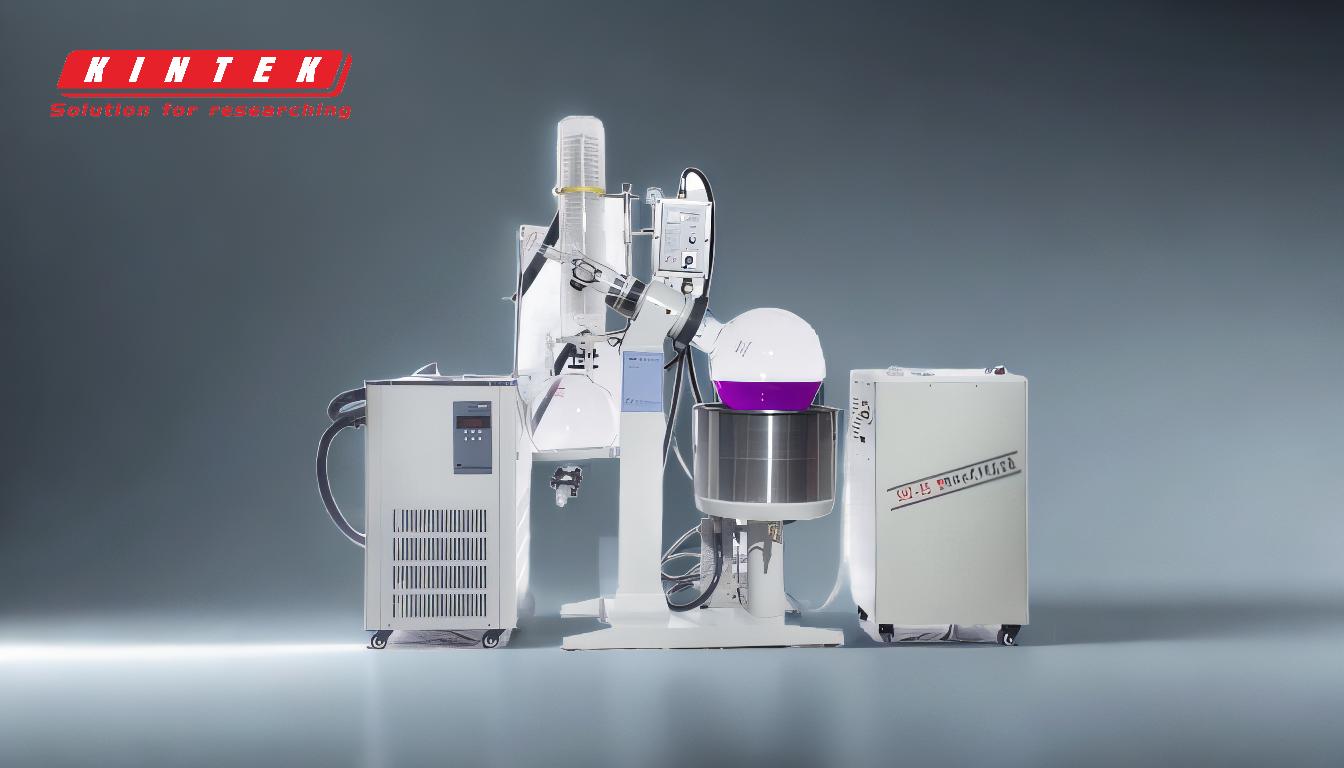When using a rotary evaporator, the round-bottomed flask should ideally be filled to no more than half its capacity. This ensures efficient evaporation by providing sufficient surface area for the solvent to evaporate while preventing spillage or bumping. Overfilling the flask can lead to inefficient evaporation, potential contamination, and safety hazards. The process involves creating a vacuum to lower the boiling point of the solvent, rotating the flask to increase surface area, and carefully monitoring the evaporation to achieve the desired concentration or separation.
Key Points Explained:

-
Optimal Flask Fill Level:
- The round-bottomed flask should be filled to no more than 50% of its capacity.
- This ensures there is enough surface area for the solvent to evaporate efficiently.
- Overfilling can lead to spillage or bumping, where the solution violently boils, potentially causing contamination or safety issues.
-
Efficiency of Evaporation:
- A half-full flask allows for rapid and uniform evaporation of the solvent.
- The rotation of the flask increases the surface area exposed to the heat bath, enhancing the evaporation process.
- Overfilling reduces the surface area, slowing down the evaporation and making the process less efficient.
-
Safety Considerations:
- Filling the flask beyond half its capacity increases the risk of bumping, which can cause the solution to splash into the condenser or vacuum system.
- This can lead to contamination of the collected solvent or damage to the equipment.
- Proper fill levels also reduce the risk of spillage, which can be hazardous, especially when working with volatile or toxic solvents.
-
Practical Tips for Large Volumes:
- If the volume of the solution exceeds half the flask's capacity, it is recommended to transfer the solution to a larger flask or evaporate it in smaller portions.
- This ensures that the evaporation process remains efficient and safe.
- Knowing the mass of the clean, empty flask beforehand can help in accurately measuring the amount of solvent being evaporated.
-
Step-by-Step Operation:
- Set up the rotary evaporator: Ensure the water bath is at the correct temperature, and the condenser is properly cooled.
- Secure the flask: Attach the round-bottomed flask to the rotovap and secure it with a clip.
- Start the vacuum and rotation: Begin with a low rotation speed (around 100 RPM) and gradually increase the vacuum.
- Monitor the process: Watch for signs of bumping and adjust the vacuum or rotation speed as needed.
- Complete the evaporation: Once the solvent is removed, raise the flask out of the water bath, stop the rotation, and release the vacuum carefully.
-
Additional Considerations:
- Protective gear: Always wear goggles, gloves, and a lab coat when operating a rotary evaporator.
- Ventilation: Use the device in a well-ventilated area or under a fume hood to avoid inhaling solvent vapors.
- Proper disposal: Follow appropriate disposal procedures for solvents and other liquids to ensure environmental safety.
By adhering to these guidelines, you can ensure safe, efficient, and effective use of a rotary evaporator, achieving the desired separation or concentration of your sample without compromising safety or equipment integrity.
Summary Table:
| Key Point | Details |
|---|---|
| Optimal Flask Fill Level | Fill to no more than 50% capacity for efficient evaporation and safety. |
| Efficiency of Evaporation | Half-full flasks allow rapid, uniform evaporation with increased surface area. |
| Safety Considerations | Overfilling risks bumping, spillage, contamination, and equipment damage. |
| Practical Tips | Use larger flasks or evaporate in smaller portions for large volumes. |
| Step-by-Step Operation | Setup, secure, vacuum, rotate, monitor, and complete evaporation safely. |
| Additional Considerations | Wear protective gear, ensure ventilation, and follow proper disposal. |
Need help optimizing your rotary evaporator setup? Contact our experts today for personalized guidance!













